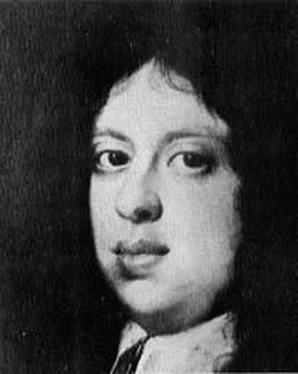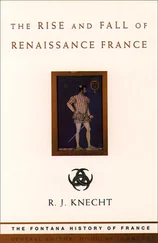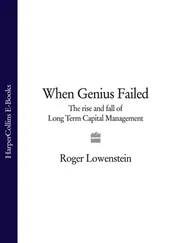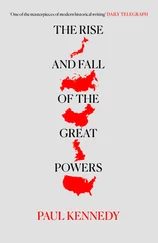‘I have seen in the short time I have been here a thousand things like it,’ wrote Francesco Guicciardini to the Pope, reporting on a riot in the Piazza della Signoria,
and all derive from the ignorance of this eunuch [Passerini] who spends the whole day in idle chatter and neglects important things… He does his best to fill himself and everyone else with suspicion; he makes everyone despair; and has no idea himself what he is doing.
His two charges, Guicciardini considered, were equally reprehensible.
There was no doubt that the Florentines agreed with Guicciardini. When the news from Rome reached the city, they marched through the streets shouting slogans and singing songs of thanksgiving. And as soon as Passerini and his two pupils had scurried away, they threw the Pope’s effigy out of the church of the Annunziata, tore it to pieces in the square, and loudly declared their approval of a new republican constitution, the re-establishment of the Grand Council as well as the militia, and the election of anti-Medicean Gonfaloniere , Niccolò Capponi, to hold office for a year. On the façade of the Medici Palace – which was, however, protected by a strong guard from mobs of would-be looters – a descendant of Ghiberti painted a picture of the Pope climbing up a ladder to the gallows.
The Pope determined to tolerate the situation no longer than his present powerlessness and bankruptcy obliged him to do. He could hope for no more help from the French whose forces, having yet again invaded Italy and advanced as far as Naples, were ravaged by the plague and obliged to surrender once more to the Spaniards. So he came to terms at last with the Emperor. On the understanding that the Pope would recognize his position in Italy and would crown him on his proposed arrival there, Charles undertook, by a treaty signed at Barcelona on 29 June 1529, to return the Medici to Florence – if necessary by force.
Thinking that they in turn would be well advised to come to an agreement with the Pope, whose conduct of the city’s government in the past had not been exceptionable, a few of the older and more cautious citizens of Florence now proposed the formulation of some sort of compromise. The younger citizens, however, refused to listen to such pusillanimous proposals and in their patriotic enthusiasm they carried the majority of the people with them. They called out the militia, voted money for mercenaries, pulled down villas beyond the walls which might have afforded cover to the Imperialists, built new strong-points, and improved the city’s fortifications. The military command they gave to a Perugian condottiere , Malatesta Baglioni, whose father had fought against the Medici and whose services to Florence would, he hoped, be rewarded by his returning to power in his native city. At the same time the ingenious Michelangelo, whose colossal and inspiring statue of David now stood in the Piazza della Signoria, was appointed to supervise the works of defence. 1
Having proposed that the defences should be extended to circum-vallate the hill of San Miniato and that the belfry of its church should be protected from artillery fire by mattresses, Michelangelo waited to see the works almost completed, then lost his nerve and fled from the city. A few days later he returned, and though not reinstated in his former responsible position, his behaviour was attributed to his artistic temperament and he was forgiven.
By then the Pope had enlisted the help of the Prince of Orange, the adventurer who had commanded the imperial troops during the Sack of Rome and who now agreed to lead an almost equally unruly, mostly Spanish force against Florence. In the early autumn of 1529 this force appeared on the hills above the city, calling out, so it was said, ‘Get out your brocades, Florence, for we are coming to measure them with our pikestaffs’. But although the army was nearly 40,000 strong, the Prince did not consider it either large or manageable enough for a direct assault and decided to starve the city into surrender.
Owing largely to the heroic activities of the gifted and ruthless Florentine commander, Francesco Ferrucci, 2who repeatedly led out fighting patrols to keep the supply routes open, the city held out for no less than ten months. On 3 August 1530, however, Ferrucci was surrounded in the village of Gavinana in the mountains above Pistoia by a troop of Spanish soldiers who hacked him to pieces; and with his death Florentine resistance collapsed. For weeks past, indeed, surrender had seemed inevitable. Malatesta Baglioni, though he inarched about the streets with the word ‘ Libertas ’ emblazoned on his hat, had already entered into secret negotiations with the enemy. The population was starving and plague-ridden; mobs marched forlornly through the streets shouting for bread and for the return of the Medici as the only means of getting it. ‘Everyone was beside himself with fright and bewilderment,’ Benedetto Varchi recorded.
No one knew what to say any more, what to do or where to go. Some tried to escape, some to hide, some to seek refuge in the Palazzo della Signoria or in the churches. Most of them merely entrusted themselves to God and awaited resignedly, from one hour to the next, not just death but death amidst the most horrid cruelties imaginable.
A week after Francesco Ferrucci’s death a deputation of Florentine citizens agreed to the terms of surrender demanded by the representatives of the Emperor and the Pope. They were forced to hand over fifty hostages as pledges for a huge indemnity, to give up the fortresses still held by Florence to the imperial army, and to release all Medici supporters who had been imprisoned. In return, the liberties of the city were to be guaranteed, and an undertaking was given that pardons would be available for ‘injuries received from alt citizens’, whom His Holiness would treat with that ‘affection and clemency he had always shown them’. But neither side expected the Pope to consider himself bound by these promises, as, in fact, he did not.
A week after the Emperor’s representatives had entered the city, those citizens prepared to vote for the creation of a Balìa were admitted to a Parlamento in the Piazza della Signoria. A Medicean Balìa was accordingly established. A faithful supporter of the Pope was appointed Gonfaloniere , and Francesco Guicciardini, who had left the city at the approach of the Imperial forces, was sent back to supervise further measures of ‘reform’ – and of revenge.
When Guicciardini arrived on 24 September he found
the people and their resources exhausted, all the houses around Florence destroyed for many miles, and in many towns of the Florentine dominion the peasant population immeasurably decreased, the common folk disappeared almost entirely.
His own villas were in ruins. He decided immediately that, if the State were to be put on ‘a proper footing again, mild measures [were] useless’. Mild measures were certainly not employed. Francesco Capponi, the leader of the extreme anti-papal party known as the Arrabbiati (the Angry Ones), was tortured and executed. So were several of his supporters. Raffaele Girolami, the newly elected Gonfaloniere , was also condemned to death, though eventually sentenced to perpetual imprisonment. Scores of other leading citizens were banished from Florence for ever.
To replace them in the government of the city, the Pope dispatched the dark, frizzy-haired, now nineteen-year-old youth, Alessandro de’ Medici, for whom he had bought the Dukedom of Penne from Charles V and to whom he hoped to marry the Emperor’s natural daughter, Margaret.
Having thus roughly and decisively settled the future of Florence, to which he himself never again returned – and having created Ippolito a cardinal, an honour to which that cheerful, gregarious, extravagant and sensual young man in no way aspired – the Pope now concentrated his attentions upon the family’s one remaining asset, the little Caterina de’ Medici, a pale, thin, rather plain but strong-willed girl of twelve. He had high hopes for her. Indeed, there were some who said he had made Ippolito a cardinal merely to remove him as a possible suitor, for she had shown signs of being unduly fond of the boy, and Clement had no mind to let her make a marriage so unprofitable both to the Medici and to himself as Pope. He wanted, in fact, to arrange for her a marriage with a son of the King of France.
Читать дальше












